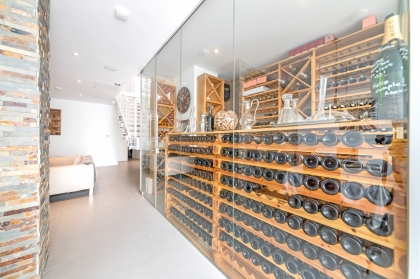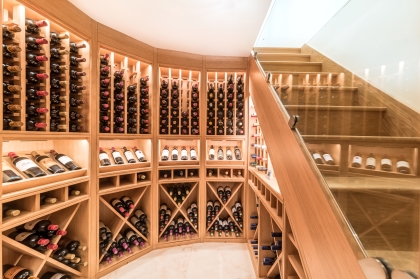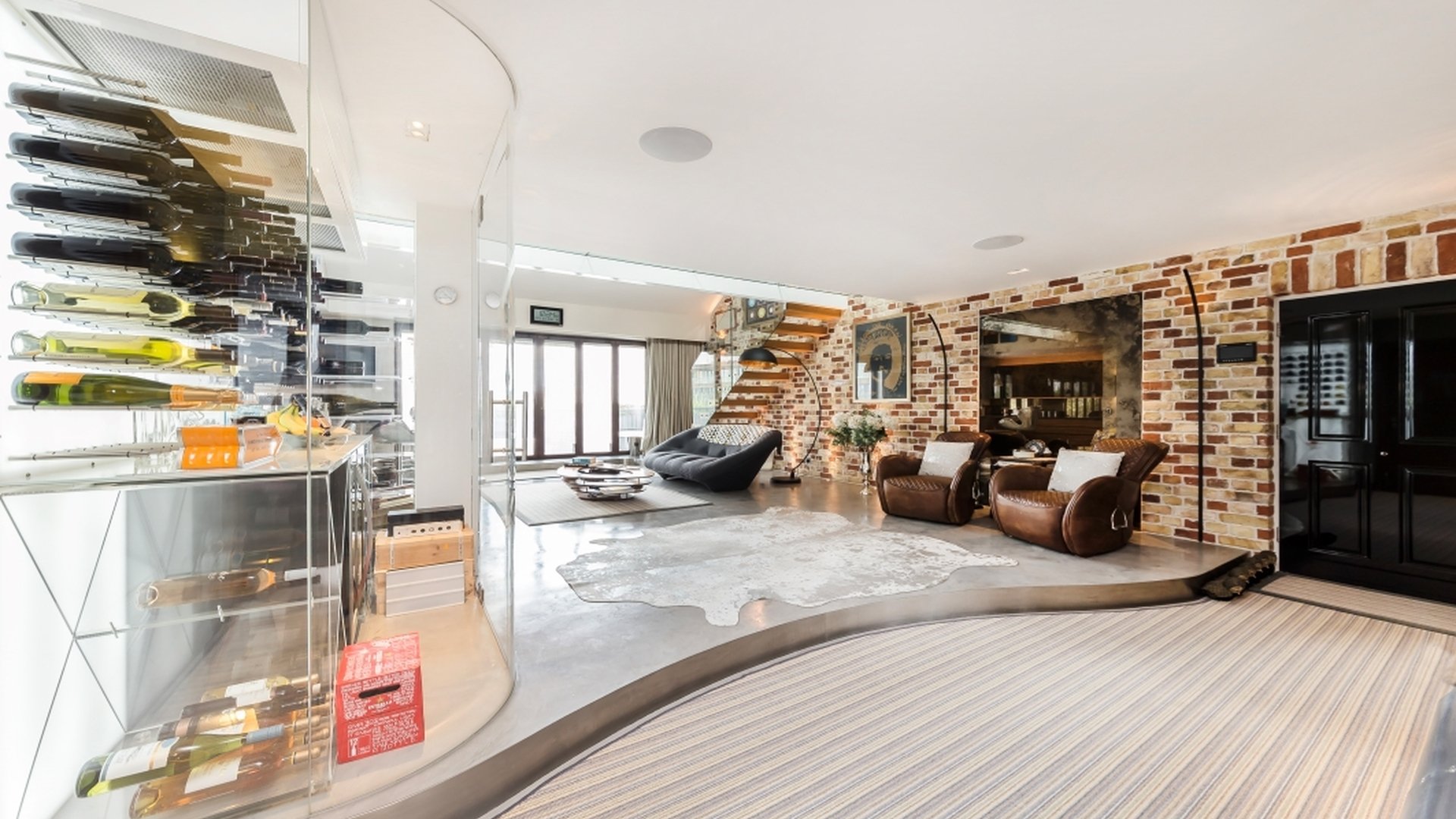A ‘cellar’ can refer to a wine cabinet, room or pod as well as a more traditional underground space. Whatever your preference, the installation of wine design will enhance any residence. The price tag can be anything from a few thousand pounds to a hefty quarter of a million pounds, and planning permission may be required.
Tim Lewis who owns Sorrells Custom Wine Rooms, established in 1947, says, “We have all types of clientele – the famous, avid connoisseurs and those who are just getting into wine. It’s like collecting art and lots of people love to have it on display. Some of our cellars are spectacular. We’ve just converted a very famous individual’s basement – there’s a dining area, bar and two wine cabinets.” Each week Tim oversees construction of four or five cellars, predominantly made of hardwood and glass. “We go around the world but everything, including our temperature control systems, is British made in-house.”
Temperature and humidity control are key to keeping wine in optimum condition. As Simon Coombs, head of client services at Cellar Maison, says, “Too much humidity, the bottles go mouldy and the labels peel off; not enough, the corks dry out and shrink and the wine will spoil. We have worked with a Master of Wine for years and recommend our clients store wine – white, red and sparkling – at a constant temperature (12-15 degrees) and relative humidity of 60-70%. If you want to drink your Châteauneuf-du-Pape you take it out and bring it to room temperature; if you decide to open a bottle of Chassagne-Montrachet Premier Cru, you chill it first to the recommended serving temperature.”


He continues, “To function correctly, a cellar needs to be thermally insulated with a vapour (condensation) barrier, and have power, drainage, a water supply and lighting. The most challenging part is the design and engineering involved to create a consistent temperature environment for the wine in a confined space. We either use an air-cooled system which has an external unit outside the property, or a water-cooled system.”.
Despite the growing trend for display, some still prefer their bottles to lie underground. Lucy Hargreaves, Managing Director of Spiral Cellars, says, “Wine aficionados who just want capacity will often opt for a spiral cellar covered over with a rug, although some will have a glass trap door so people can see it. “In a spiral cellar, you can store up to 1,900 bottles and be confident of having the right humidity levels, the right temperature, no UV light or vibration– four components for correct storage. The temperature of the ground in the UK sits at around 13 degrees, a natural temperature for storing wine.”
The spiral cellar was invented by a Frenchman 40 years ago, and construction involves digging out around six skips of soil and the installation of a rubber liner. The deepest cellar is three metres and has 11 concrete steps. The wine bins are also made of concrete and hold 24 bottles each.“One man will build up the bins from the base to the trap door like giant pieces of Lego,” Lucy explains, adding, “We also fit two ventilation pipes to an outside wall that bring in a gentle flow of air to keep the right humidity level. As it is the ground that maintains the temperature, there’s no risk of mechanical failure, so you can go away on holiday knowing that the wine is completely safe.”So, when it comes to wine storage, there is a cellar to suit everyone’s taste – surely a reason to celebrate!

